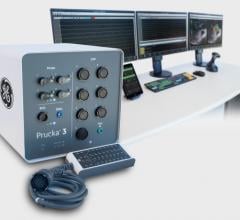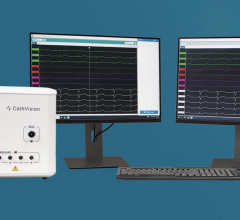
September 15, 2011 — Music icon Barry Manilow recently revealed his long struggle to manage a serious heart disease called atrial fibrillation (AFib). He has joined with Sanofi US to kick-off “Get Back in Rhythm,” a national AFib awareness and education campaign. The goal is to encourage people to learn more about all the risks of AFib and the importance of keeping the heart in rhythm.
Today, approximately 2.5 million Americans have AFib; that number is expected to grow to 12 million by 2050. The disease causes the heart to race and beat out of rhythm. It can lead to permanent heart damage, heart attack, heart failure, stroke and death.
"When I first experienced AFib more than 15 years ago, it was really scary -- it felt like a fish flopping around in my chest," said Manilow. "I thought I knew about all the risks, but it turns out I didn't, so I was really lucky I had such great doctors helping me manage it from the start."
AFib is a complex disease and many patients may not recognize the symptoms or the full range of health risks associated with it. This is why Manilow encourages those affected by AFib to visit www.GetBackInRhythm.com; to test their AFib knowledge with the Rhythm IQ quiz; learn more about all the risks of the disease; and print a guide that can help make the most of visits with healthcare providers.
The campaign will also include a public service announcement (PSA) featuring Manilow to help raise awareness about AFib. The PSA will debut at Manilow's Sept. 14 concert at the Warner Theatre in Washington, D.C. It will be on display as attendees enter the venue lobby.
"At first, I kept my AFib private because I didn't want to acknowledge there was something wrong with my heart. But now I realize a lot of my fans and so many others could be affected, so I want to do all I can to help them take it seriously, understand all the risks of AFib and seek the best care," admits Manilow. "The bottom line is AFib needs more awareness. Patients need more education. No one should settle for a life out of rhythm."
In patients with AFib, the upper chambers of the heart beat out of rhythm with the lower chambers. This can cause a change in the shape and size of the heart, a process known as remodeling.
Remodeling can take place after only a short time out of rhythm, and a remodeled heart can become less efficient at pumping blood, working harder over time. When the heart remains out of rhythm, remodeling is progressive and can become permanent.
Three of the primary goals of managing AFib, as defined in current American Heart Association (AHA), American College of Cardiology (ACC) and Heart Rhythm Society (HRS) AFib management guidelines, are: getting your heart back in rhythm, slowing a racing heart rate and preventing stroke. Unfortunately, many people are unaware if their AFib management plan is designed to do all three.
"There is a lot of confusion out there about AFib, its risks and how to manage it. For example, many people with AFib know it increases their risk for stroke, but many don't realize that there are many other risks associated with the heart being out of rhythm," said Marcus Wharton, M.D., Frank P. Tourville professor of medicine and director of cardiac electrophysiology at the Medical University of South Carolina. "Some people think just because they take multiple medications for AFib, they are fully managing the disease, but often that is not the case. This is why people need to educate themselves and engage in ongoing discussions with their healthcare providers about their AFib management plan."
The goal of the Get Back in Rhythm campaign is to improve the health and well-being of those affected by AFib. It encourages people to learn more about all of the risks, and talk with their healthcare provider about how to maintain a normal heart rhythm and manage the disease.
The campaign website offers a collection of resources; they include the Rhythm IQ to test AFib knowledge, an AFib Risk Assessment tool and a discussion guide to help patients make the most of visits with healthcare providers. In addition, visitors can learn about Manilow's personal experience living with AFib and see what he's doing to help others "get back into rhythm."
For more information: www.getbackinrhythm.com


 February 02, 2024
February 02, 2024 








